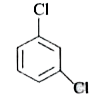Glycine and alanine are different with respect to one substituent on the α-carbon. What are the other common substituent groups ?
To address the question regarding the common substituent groups in glycine and alanine, we can follow these steps:
1. Identify the Structure of Glycine and Alanine:
- Glycine (Gly) has the following structure:
- It consists of an amino group (-NH2), a carboxyl group (-COOH), a hydrogen atom (H), and an alpha carbon (C).
- Alanine (Ala) has a similar structure but differs in one substituent:
- It consists of an amino group (-NH2), a carboxyl group (-COOH), a methyl group (CH3), and an alpha carbon (C).
2. Common Substituent Groups:
- Both glycine and alanine share the following common substituent groups:
- Amino group (-NH2): This is present in both amino acids.
- Carboxyl group (-COOH): This is also present in both amino acids.
- Hydrogen atom (H): Glycine has two hydrogen atoms attached to the alpha carbon, while alanine has one hydrogen and one methyl group (CH3).
3. Conclusion:
- The common substituent groups for glycine and alanine are:
- -NH2 (amino group)
- -COOH (carboxyl group)
- H (hydrogen atom)
Final Answer:
The common substituent groups in glycine and alanine are:
- Amino group (-NH2)
- Carboxyl group (-COOH)
- Hydrogen atom (H)
---
- Glycine (Gly) has the following structure:
- It consists of an amino group (-NH2), a carboxyl group (-COOH), a hydrogen atom (H), and an alpha carbon (C).
- Alanine (Ala) has a similar structure but differs in one substituent:
- It consists of an amino group (-NH2), a carboxyl group (-COOH), a methyl group (CH3), and an alpha carbon (C).
- Both glycine and alanine share the following common substituent groups:
- Amino group (-NH2): This is present in both amino acids.
- Carboxyl group (-COOH): This is also present in both amino acids.
- Hydrogen atom (H): Glycine has two hydrogen atoms attached to the alpha carbon, while alanine has one hydrogen and one methyl group (CH3).
- The common substituent groups for glycine and alanine are:
- -NH2 (amino group)
- -COOH (carboxyl group)
- H (hydrogen atom)
The common substituent groups in glycine and alanine are:
- Amino group (-NH2)
- Carboxyl group (-COOH)
- Hydrogen atom (H)
Topper's Solved these Questions
- BOOK - NCERT EXEMPLAR ENGLISHCHAPTER - BIOMOLECULES EXERCISE - Short Answer Type Questions5videos
BIOMOLECULES
- BOOK - NCERT EXEMPLAR ENGLISHCHAPTER - BIOMOLECULES EXERCISE - Long Answer Type Questions5videos
BIOMOLECULES
- BOOK - NCERT EXEMPLAR ENGLISHCHAPTER - BIOMOLECULES EXERCISE - Long Answer Type Questions5videos
BIOMOLECULES
- BOOK - NCERT EXEMPLAR ENGLISHCHAPTER - BIOLOGICAL CLASSIFICATIONEXERCISE - Long answer5videos
BIOLOGICAL CLASSIFICATION
- BOOK - NCERT EXEMPLAR ENGLISHCHAPTER - Body Fluids and Circulation EXERCISE - LONG ANSWER TYPE Q5videos
Body Fluids and Circulation
Similar Questions
Knowledge Check
- Question 1 - Select One
Which of the following substituted benzene derivatives would furnish isomer when one more substituent is introduced ?
A B
B C
C D
D
- Question 2 - Select One
Which of the following is correct with respect to -|-effect of the substituents? (R = alkyl)
A−NH2<−OR<−FB−NR2<−OR<−FC−NH2>−OR<−FD−NR2>−OR>−F
One of the constituents of baking powder is sodium hydrogen carbonate the other constituent is
View SolutionA carbon atom having four different groups is known as
View SolutionHow do alkanes, alkenes and alkynes differ from each other with respect to Nature of bonds between carbon atoms
View SolutionIn what respects ciliates differ from other protozoans ?
View SolutionWhat is the common name given to the elements of group 2 ?
View SolutionWhat are common oxidation states of group 15 elements?
View Solution

